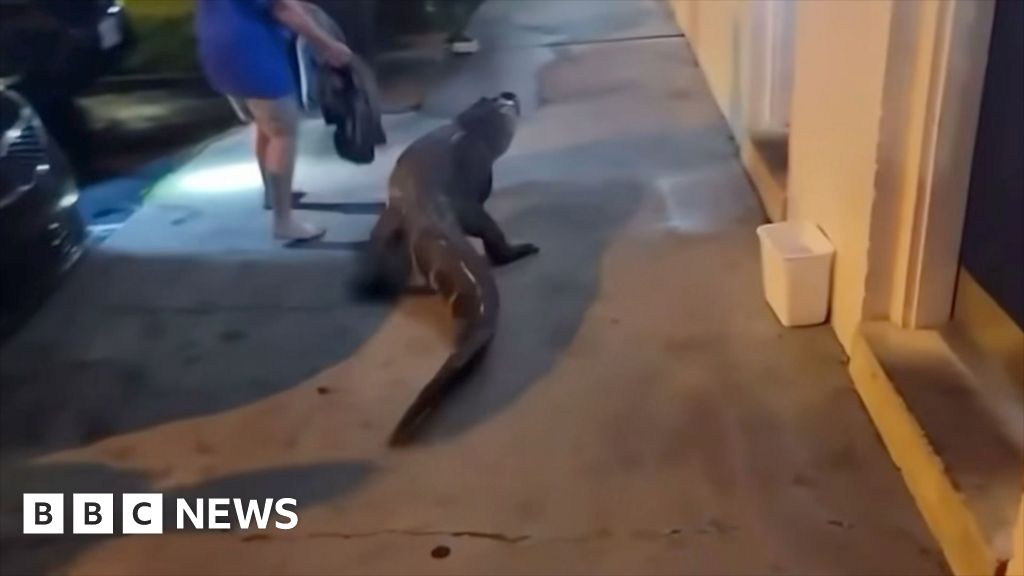ARTICLE AD BOX
 Image source, Getty Images
Image source, Getty Images
Rescue personnel in Florida's Lee County on 30 September
By Bernd Debusmann Jr and Sam Cabral
BBC News
The death toll from Hurricane Ian has reportedly risen past 80 in Florida as rescue personnel continue to search for survivors and assess the damage.
Officials in Florida have come under fire as critics allege residents in some hard-hit areas did not receive enough advance warning to evacuate.
At least half of the deaths recorded so far are in Lee County, where Ian made landfall as a Category 4 hurricane.
President Joe Biden is expected to visit Florida on Wednesday.
According to the BBC's US partner network CBS, the hurricane's death toll in Florida stood at at least 82 on Monday morning. Another four deaths have been confirmed in North Carolina.
The Florida District Medical Examiners Commission, however, has put the death toll at 58. The figures differ as while local officials may report additional storm-related deaths, the medical examiner's officer is only attributing a death to the hurricane after an autopsy is performed.
The bulk of the deaths - 42 - have been reported in Lee County, which includes the hard-hit areas Fort Myers, Sanibel and Pine Island. On Friday, Florida governor Ron DeSantis described the county as "ground zero" for the hurricane.
Confusion over death tolls is common in the wake of hurricanes. In 2020, for example, fewer than 20 deaths were reported from Hurricane Laura days after it made landfall in Louisiana - a figure which the National Hurricane Center later revised to 47.
While the death toll from Hurricane Ian already makes it one of the deadliest hurricanes in recent memory, it still pales in comparison to 2005's Hurricane Katrina, which killed over 1,800 people.
In the wake of the storm, officials in Lee County have faced questions about the timing of their evacuation order, which was issued on 27 September, less than 24 hours before Ian made landfall. Several other counties in the path of the incoming hurricane issued their own evacuation orders a day before,
Local officials, as well as Governor DeSantis, have defended Lee County's preparations for the hurricane.
"Everyone wants to focus on a plan that might have been done differently," Lee County Sheriff Carmine Marceno said on Sunday. "I stand 100% with my county commissioners, my county manager. We did what we had to do at the exact same time. I wouldn't have changed anything."
A 2015 planning document on the official website of Lee County's government notes that "due to our large population and limited system, Southwest Florida is the hardest place in the country to evacuate in a disaster." The document adds that evacuation decision-making procedures consider "evacuation risks, the disruption to both the lives of our residents/visitors, businesses and the potential magnitude of the impending threat".
Image source, Getty Images
Image caption,An aerial view of Fort Myers on 2 October
The death toll cited by Florida officials does not include at least 16 Cuban migrants who remain missing after their boat capsized off the state's coastline during the hurricane. Of the 27 people on board, nine were rescued by the US Coast Guard and two managed to swim ashore at Stock Island, near Key West, The bodies of two more who died have been recovered. The Coast Guard has suspended the search for those still missing.
Approximately 600,000 people remain without power across the state, according to data from poweroutage.us.
The utility company with the largest number of outages, Florida Power & Light Co, said that the majority of customers will have their power restored by 7 October, but that storm damage has made some properties "unable to safely accept power".
While officials are still assessing the damage caused by the hurricane across the state, experts have warned that the economic cost could ultimately rise to tens of billions of dollars. So far, insurers have reported about $1.44bn (£1.28bn) in preliminary claims.
A preliminary forecast from data firm Enki Research published on 1 October estimated that total damages will amount to at least $66bn, but could rise as high as $75bn.
US President Joe Biden will visit Florida on Wednesday, October 5, two days after a visit to Puerto Rico, which itself was struck by Hurricane Fiona just days before Ian hit Florida.
US Coast Guard airlifts residents out of Sanibel Island

 2 years ago
49
2 years ago
49








 English (US) ·
English (US) ·